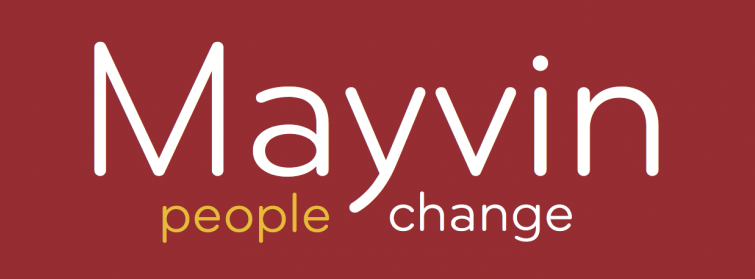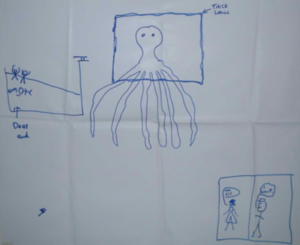Mayvin Chairman Tony Fraser introduces the first of three articles about Gestalt in Organisation Development (OD). After a brief introduction including an account of his personal experience of the power of the Gestalt method, Tony highlights the three distinctive domains of the Gestalt OD practitioner: Raising Awareness; Making meaning; Encouraging and supporting contact.
This article explores ‘Raising Awareness’ why it is relevant and important and provides an organisation example of an awareness raising intervention and how it led to a positive breakthrough.
Introduction
Forty years ago, around 1977 -1980, I trained as a Gestalt psychotherapist with Ischa Bloomberg, Laura Perls, Isadore Fromm and others . I found it exciting, scary even, but effective: full of drama and unexpected insights and breakthroughs.
An example: On one occasion in a group, when asked what I was aware of in my body, first, I rediscovered in that moment, my physical state. Now, paying attention, I scanned my body and reported tension in my shoulders.
“If your tense shoulders had a voice what would they say to you?”
“Hold tight”
The exploration of what I was holding tight brought to the surface, to my awareness, something I had learned the previous day, news that my brother was separating from his wife. I had felt very distant from my brother for years – we were different – I didn’t like him.
In that moment I discovered my deep distress at his pain and hurt.
Oh, good grief, a new realisation…..I love my brother; I had no idea!
That understanding changed my relationship with my brother. We and our families are now close.
The Gestalt approach has this extraordinary way, through simple awareness, of bring into focus what we want, need or are concerned about. These are our most powerful driving forces and they can be traced and tracked through our physical sensations, our emotions, our thoughts.
At the time of doing the training, I was a programme director at Roffey Park running personal and leadership development programmes for managers. I was really good at running development workshops but a pretty hopeless therapist. Taking responsibility for solving other people’s problems doesn’t make for good therapy.
So rather than apply my understanding of the Gestalt approach to individuals in pursuit of mental and emotional well-being, I have used it both as a framework for understanding organisations and as a resource for OD and coaching interventions.
So, I think of myself as an OD practitioner and coach using my understanding of Gestalt to inform my practice.
Although it has some important concepts and principles, Gestalt is more about a way of being in the world than it is about knowledge and analysis. It has taken a bit of time both in my practice and in teaching Gestalt to OD practitioners to distil from the wide body of knowledge the core elements that are most relevant to organisations. Through 10 years of running Gestalt in OD programmes at the Gestalt Centre London I have arrived at the proposition that what makes the Gestalt OD practitioner special, what gives them ‘an edge’, is their focus on three types of intervention:
- Raising Awareness
- Making meaning
- Encouraging and supporting contact
The feedback from past Gestalt in OD participants is that the framework really helps them both in making sense of what goes on in organisations and in designing and executing interventions.
There is too much to cover all three topics in one blog, so in this piece I will explore the Gestalt approach to awareness.
Raising Awareness
During an informal question and answer session on a Buddhist retreat a participant asked the teacher:
“During the walking meditation, what should I be aware of?”
The Buddhist master answered:
“Well, at least be aware you are walking.”
As in mindfulness, in Gestalt, awareness comes first. It’s odd, being aware is so simple and yet extremely difficult. It is a skill and, as with most skills, requires a lot of practice to become good at it.
There is so much data, so much going on. Our normal everyday pattern is to focus so much on purposeful activity, on staying on top of things, on managing everything from our feelings to our obligations that we lose our ability to “tune-in”. I often start my coaching sessions by asking people to notice how they are – what sort of mood they are in, how they are physically, what is their state of mind?
There are lots of reasons why we all, at times, block our awareness of some of our intentions and behaviours and why we often fail to recognise what is going on around us. We all have ‘blind spots’ – stuff we fail to notice. These gaps can be the results of lapses in observation or perception, a defence against anxiety, distress or discomfort, being more interested in something different.
Gestalt training above all else emphasises the importance of awareness – the curiosity to find out, coupled with the ability to observe intensely; inwards and outwards and recognise ‘what goes on’. Despite this, I know I still have blind spots but my Gestalt training helps in two ways:
- With effort I can increase what I notice both inside and around me
- When challenged, I have a capacity and willingness to become aware of something I had failed to notice or avoided until that moment.
The good news is that, as an outsider, the OD practitioner is most likely to have different blind spots from his/her client and so has the opportunity to bring hitherto ‘hidden’, crucial information to the attention of the client.
An example of Gestalt in OD:
The Board of a large financial institution had invested considerable effort in improving their teamwork. Broadly the time they had spent together in getting to know eachother, their strengths and weaknesses, their individual and collective preferences and patterns of behaviour had led to beneficial changes. The team was now pretty functional and effective. There was now considerable ambition and energy to achieve more, faster.
What became clear was that their teams, especially their direct reports were not responding and Board members were frustrated. They needed the next level down to take greater responsibility for running things and implementing changes while the Board developed strategy and set priorities. They began to believe their people were not able to respond: ‘they just weren’t up to it’.
I was asked to fix this, either by confirming these were ‘the wrong people’ or finding out what was wrong with them and providing a remedy.
I noticed my uneasiness with the brief. I knew some of the individuals. I thought they were skilled and motivated. I came to believe there was something going on that neither I nor the Board understood. So with the appropriate permissions, I found a way to investigate.
I got groups of eight ‘direct reports together – established confidentiality – for me that means “I won’t drop you in it” and you’ll never come to think, “I wish I hadn’t said that”.
I asked them to work in separate pairs to draw an image which represented their relationship with the Board.
The Gestalt approach encourages using imagery as a way of by-passing habitual defensive routines and rationalisations and accessing intentions, feelings, needs, concerns etc more directly.
Working with pictures and images raises awareness without having to be aware.
Here is an example of what they produced:
The octopus (The Board) – has its head inside thick walls so Directors are invisible - there is no transparency – or perhaps visible but are not attempting to engage. S. is in meetings from 0830 to 1730 – cannot remember when S has ever stopped to talk to a member of my team. We believe they (Board members) have good intentions. They need to look at their diaries and see if they are spending their time the way they should be
The words summarised what was said when the pair were asked to ‘explain’ the drawing to the other group members.
The drawings and commentary were put together in a report to the Board. The Board were astonished and amazed. They had no idea that’s how their people experienced them.
Now that they were aware, they were keen to make changes. In the next phase, the second tier spent a day together developing proposals for change. They developed ideas about rules of engagement, new processes and changes to delegated authorities and how decisions were made. The Board attended the last 2 hours of the day to hear the proposals, agree to some, reject a few and commit to working on others. There were risky and uncomfortable conversations. In Gestalt terms we say: there was ‘contact’. The third blog in this series will say more about what contact is and how to encourage and support it in an organisation.
The discipline that Gestalt requires for oneself is the open-minded willingness to enquire, to notice, to recognise and acknowledge. I think that is what most people mean by ‘mindfulness’. This applies when what comes up is unwelcome and unpleasant as much as those delightful discoveries that my worst fears have not been realised.
In raising awareness in others the same principle applies. Effective interventions are those designed to raise awareness in others. In the example, the Board became aware of how their good intentions created unexpected and unwanted consequences. Sometimes it is simply a matter of enabling others to recognise their own intentions, needs, wants, feelings, behaviour and how they relate to their situation. Through awareness people and in organisations, especially leaders, come to really ‘know what they are doing’ like ‘holding on’ or ‘competing’ or ‘avoiding difficulty’.
These primary motivations which can be seriously destructive are surprisingly often concealed or suppressed from oneself but operate anyway, outside of awareness, to drive unhelpful decisions and actions.
To paraphrase the Buddhist master…
if you are doing something, at least know, that’s what you are doing.
We'd love to know your thoughts on Gestalt in OD. Join the conversation on Twitter @MayvinLtd and @TonyFraser or contact us here.


